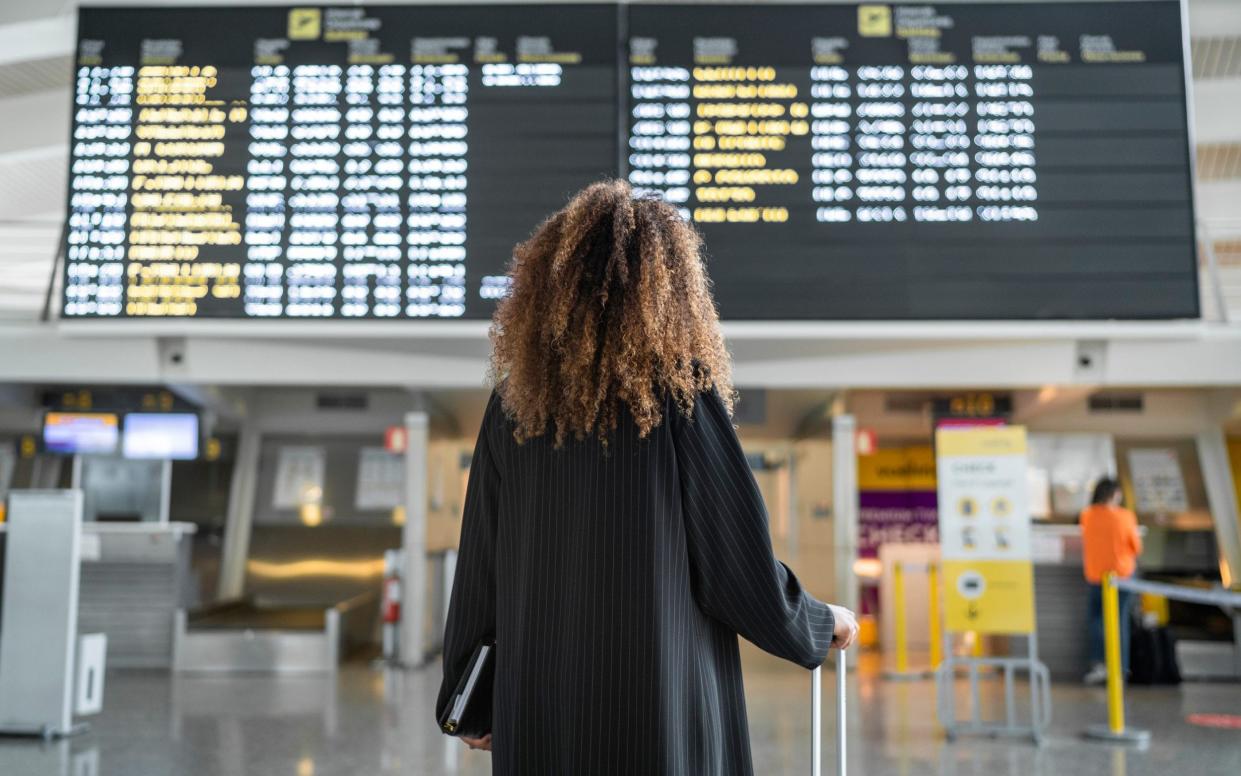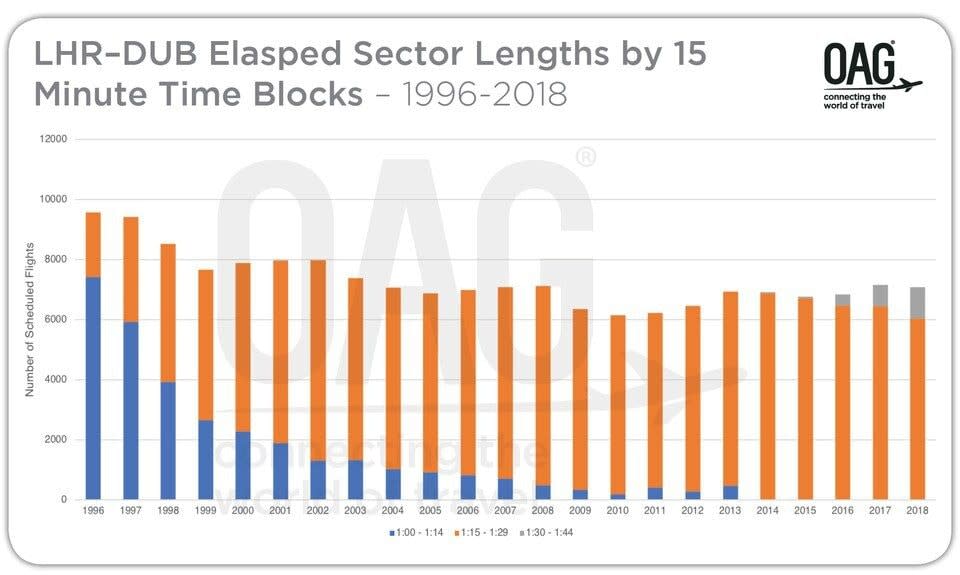Why flight times are longer than they were 25 years ago

Back in 1996 it took an hour to fly from London to Dublin. Today it takes 90 minutes. Twenty-five years ago the flight time from Heathrow to JFK was seven hours. Now it’s at least eight.
There’s something counterintuitive about the fact that advertised flight times are longer than they once were. After all, modern technology has brought us more efficient and state-of-the-art aircraft – one would expect them to be capable of flying more quickly. The truth, it seems, is the opposite.
What’s going on?
There are some reasonable excuses for why an airline might need longer to travel from A to B.
Airports are considerably larger, which means that simply getting from the departure gate to the end of the runway can eat up 10 minutes.
Furthermore, airlines are more conscious than ever of their fuel bills – and have in recent years adjusted their aircraft’s cruising speeds accordingly. In 2013 Ryanair told its pilots to save cash by going more slowly – adding two minutes to every hour’s flying time. In 2008 Associated Press reported that when the same tactic was used by American airline JetBlue it saved $13.6 million a year.
Arguably less reasonable is the practice of deliberately overstating flight times in order to reduce the likelihood of delays being registered – something known by industry wags as “schedule padding”.
This means that two hours might be allotted for what is really a 90-minute flight, giving airlines a bit of wiggle room in case problems occur.
When those problems are beyond the control of the airline, this seems a fair tactic. The skies are far more crowded than they were a few decades ago, with airborne traffic jams often forcing planes to spend time in a holding pattern before landing at their destination. Airlines need to factor in such hurdles when finalising their schedules in the same way that, ahead of a long car journey, you might allow a little extra time in case of congestion on the motorway.
But adding on those extra minutes to simply cover up an airline’s own tardiness and inefficiency is much less understandable. The passenger loses out, and efforts to compare airlines when it comes to punctuality become difficult.
The importance of being punctual
It’s not clear how widespread such tactics are – airlines often deny schedule padding exists at all – but the importance of maintaining a strong on-time performance (OTP) rating is undeniable. Ryanair regularly touts its lofty OTP, having gone to great lengths to reduce its turnaround times (including the removal of all seat-back pockets), and publications including this one will highlight those carriers with a major punctuality problem (Wizz Air was last summer’s big loser with an OTP of just 30.9 per cent).

Only after exceeding its scheduled departure or arrival time by 15 minutes is a flight considered delayed, but in the case of longer delays the issue for airlines becomes financial rather than reputational.
Under EU law, in the event of a delay which is the fault of the airline of three hours or more, you are entitled to cash compensation of between £220 and £350. This means that just one badly delayed flight can cost a carrier upwards of £70,000. No wonder they are keen to give themselves some wiggle room.
Dr Pere Suau-Sanchez, a lecturer in Air Transport Management at Cranfield University, is reluctant to blame airlines for publishing longer flight times, noting that airspace over airports is now extremely limited. “Aircraft are spending longer in the sky simply waiting for a gap in which they can land,” he says.
Technological advances have mitigated this somewhat, but Suau-Sanchez believes that “any improvements are mostly offset by the much larger increase in demand.”
He also stresses that timetables are not just organised by how fast the flight is, but by airport staffing capacity, from baggage handlers to immigration officers: “The schedule will be decided by what’s feasible,” he adds. “Year to year there aren’t huge changes, but they eventually accumulate and become significant.”
The pandemic’s one positive effect on travel
Indeed, flight times – while still well up on 25 years ago – actually fell slightly during the pandemic thanks to the reduced demand for air travel.
“It was announced by industry experts in 2019 that the whole of the European air traffic system was now full, and there wasn’t enough space to handle any more aircraft,” explains John Grant, from aviation analytics company OAG. “We were braced for the inevitable congestion and delays. And then along came Covid, which changed everything.
“It’s really interesting: the last time European airspace became congested was around 9/11, and then again just before the financial crisis. Every time, we almost get to a breaking point and then something external happens to cause a reduction in air travel.”
This current pause might not last for long, says Grant, “and when demand returns to normal levels delays may be higher than they already have been this year.” So brace yourselves for even longer flight times.
How much have flight times increased?
Research by OAG in 2018 revealed that scheduled flight times have increased by as much as 50 per cent since the 1990s. But, as outlined above, they have fallen slightly since the pandemic.
Looking at Europe’s busiest international route, for example – Heathrow to Dublin – it found that in 1996 the vast majority of airlines published a scheduled flight time of between 60 and 74 minutes. By 2018 almost all claimed the journey took between 75 and 89 minutes, while a handful banked on 90 minutes or more. In 2022, 90 minutes is what Aer Lingus requires, BA asks for 85.

For the hop from Heathrow to JFK, OAG found that a few airlines back in 1996 allowed less than 7 hours 30 mins for the journey, but most scheduled between 7 hours 30 mins and 8 hours 15 mins. By 2018, some were opting for 8 hours 30 mins or more. In 2022, 8 hours is normal, but JetBlue requires 8 hours 30 mins.

For Gatwick-Palma, the majority of carriers gave a flight time of between 2 hours and 2 hours 15 mins back in 1996. By 2018 a third scheduled more than 2 hours 30 mins for the trip. In 2022, 2 hours and 25 minutes is typical.


 Yahoo Movies
Yahoo Movies 
